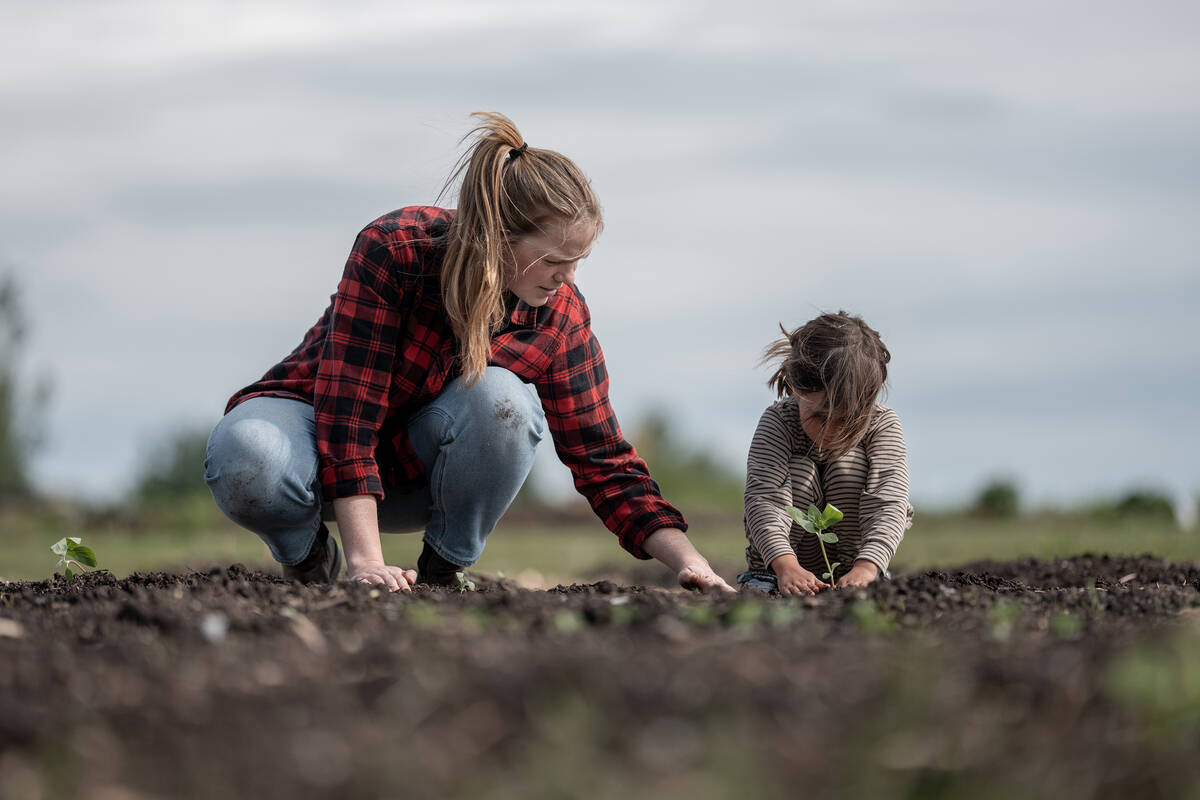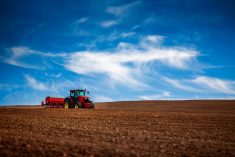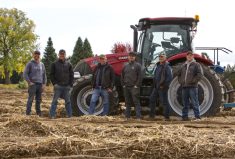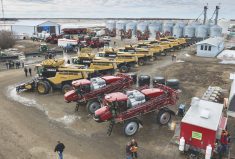Rapidly rising populations, sprawling cities, shrinking farmland, and the feared effects of climate change prompted the Ontario government to create its Greenbelt around Toronto 10 years ago, with the goal of protecting some of the nation’s top agricultural land from development and fragmentation.
After a decade, it seems it may be working.
The greenbelt approach to land use planning has garnered mostly cheers — but some jeers too — from municipalities, environmentalists, planners, developers, farmers, academics and others. The plan’s future is currently being discussed by all of them under a comprehensive review with many, sometimes conflicting, ideas being offered up about its legacy and impact, and where it should go from here.
Read Also

Farm succession: Where to begin?
Recognizing that the process of farm succession is lengthy, involved and requires a solid end goal can help farmers determine where to start.
At stake is 1.8 million acres of highly productive farmland, natural treasures, and environmentally sensitive ecosystems right beside some of the most densely populated land in the country. The Greenbelt encircles what is called the Greater Golden Horseshoe, home to more than nine million people (i.e. a quarter of Canada’s population) including the cities of Hamilton, Toronto and Oshawa.
To farmer Jason Verkaik, however, the perspective is exactly wrong.
“We should have greenbelted the whole province generations ago and put up the cities and towns around the protected area,” says Verkaik, who grows mostly carrots, onions and beets on 220 acres of the Holland Marsh and who is president of the Ontario Fruit and Vegetable Growers Association. The Holland Marsh, north of Toronto, is part of the Greenbelt, and its rich soil makes it a key producer of vegetable crops.
 While Verkaik knows his idea is no longer a real option, he’s not anti-city. He is a progressive farmer — he tries new vegetable varieties, is plugged into the latest muck crop research, and appreciates his urban customers. He says things like “farmers feed cities, but farmers also need cities.”
While Verkaik knows his idea is no longer a real option, he’s not anti-city. He is a progressive farmer — he tries new vegetable varieties, is plugged into the latest muck crop research, and appreciates his urban customers. He says things like “farmers feed cities, but farmers also need cities.”
But Verkaik draws the line at letting urban people decide policy for farmers because he feels non-farmers don’t have a full perspective of all the issues. He recalls, for instance, attending one of the province’s stakeholder organization meetings in March, and emerging with a clear take-home. “Some people have pretty intense agendas,” Verkaik says. “Not always do they balance that out with people’s need to eat.”
Still, Verkaik stuck to his message at the meeting. If you want to protect farmland, he told everyone who would listen, you have to protect the farmer and his business.
“We have to have a system in which the next generation wants to continue the business of farming as a great way of life that’s good for the world, where you can make a profit at it and have some security,” Verkaik says.
Many of the academics and non-profit organizations who have studied the Greenbelt agree with Verkaik.
In 2013, Wayne Caldwell, the University of Guelph’s director of its School of Environmental Design and Rural Development published a study about the Greenbelt called Possibility Grows Here. He feels that farmers’ needs and concerns must be more clearly on the table in the Greenbelt Plan.
“If agriculture is to be there, it won’t be there by accident — there have to be intentional policies to support agriculture — both nationally and provincially, and in terms of economics and land use,” Caldwell says. “There’s a need for a vision to clearly state what we want agriculture to be like in 20 or 30 years, and policies to adequately support it.”
The Canadian Institute for Environmental Law and Policy (CIELAP) also agrees. As its 2010 study that covered the Greenbelt in an international context says: “Protecting the Greenbelt’s valuable agricultural land base from loss and fragmentation needs to be complemented with measures to ensure the continued economic viability of near-urban agriculture. Municipalities and the provincial government should collaborate with local agricultural action committees and others to develop and implement supportive policies, including expansion of markets for locally grown foods and other more direct farm-to-consumer mechanisms, diversification of on-farm activities, and strengthening of farming capacities.”
The CIELAP study compared Ontario’s plan with other greenbelts in Denmark, England, Brazil, Australia, the Netherlands, Germany and the U.S.
Ontario’s version, while being the youngest, was also the most effective, the report says. It concludes, “Compared to other greenbelts around the world, this Greenbelt is underpinned by one of the strongest legal frameworks, impressive political commitment, a clear diversity of benefits, enthusiastic community organizations, and a supportive public.”
When asked what it is doing for farmers, the Ministry of Municipal Affairs and Housing (MMAH), which is conducting the current review, says the province “has a wide range of economic supports, programs and resources to support the agri-food sector.”
MMAH says the early feedback from the farming community includes support for several key planks, such as strengthening agricultural land protection, providing flexibility for on-farm economic activities, streamlining implementation and approval processes that affect farming, and supporting farmers.
Some of the support that farmers have received has come in the form of grants from the Friends of the Greenbelt Foundation and later the Greenbelt Fund.
The foundation, created in 2005 shortly after the Greenbelt legislation was passed, has put nearly $36.7 million into farming, environmental, tourism and other projects in the area. The Holland Marsh Growers’ Association was set up in 2008 with $400,000 from the foundation.
The Greenbelt Fund, started in 2010, helps businesses and organizations all across the province. Between 2010 and 2014, it invested $7.9 million in local food-boosting projects — about 80 per cent in the form of grants. The organization says that for every $1 it invests, local food sales increase by $7.
The fund also sponsors Ontariofresh.ca, an online business connector that puts farmers and customers together.
While there is much to recommend the Greenbelt Plan, there are also some downsides, including the vast array of regulations and legislation that affect and overlap it.
The current province-wide review is called “co-ordinated” because it includes not only the Greenbelt, but also the Growth Plan for the Greater Golden Horseshoe, the Niagara Escarpment Plan and the Oak Ridges Moraine Conservation Plan. The government set up a series of public consultations around the region to garner input into the plans’ future.
Most participants at the Caledon Town Hall meeting in late March agreed that it was wise to look at the four plans together. But some questioned why there had not been better co-ordination in the first place, and asked if there could be more consolidation coming out of the talks.
With 78 per cent of his municipality in the Greenbelt, Caledon mayor Allan Thompson expressed his frustration as a municipal leader trying to help farmers and businesses with all the rules: “We need one set of policies for agriculture, and one set for businesses and small communities,” he said after the initial presentation. “I don’t have a comfort with what you’re showing here — are you bringing this all together?”
Thompson pointed out that a Greater Toronto Area Agricultural Action Plan already existed and it covered the entire area, from Durham Region to Niagara. That plan was published around the same time the Greenbelt legislation was passed in 2005, and was supported by the federal and provincial governments, the Golden Horseshoe municipalities, and all the local federations of agriculture. It offered recommendations related to economic development, education, marketing, land use policy, and accountability and responsibility.
Over and above the four plans being reviewed, the Planning Act and Provincial Policy Statement (PPS) set the basic ground rules and directions for land use planning in Ontario. In addition, there are no fewer than 18 other laws, strategies, plans and guidelines that affect what happens in the area.
The Ministry of Municipal Affairs and Housing says that changes made to the PPS in 2014 provided added flexibility for on-farm economic activities. It also says that the Ministry of Agriculture, Food and Rural Affairs is developing a “Farms Forever” program to complement steps already taken to better protect farmland and to support the growth of the agri-food sector.
Keith Currie, vice-president of the Ontario Federation of Agriculture (OFA) was also at the Caledon meeting as part of the panel heading up the province-wide review. Two of the six panel members represent farm groups. Former Toronto mayor David Crombie chairs the panel, and Debbie Zimmerman, CEO of the Grape Growers of Ontario, is the other farm representative.
Currie says that while the OFA was initially against the Greenbelt legislation, in his words, “time heals, and the Greenbelt is not going away.”
The OFA is Canada’s largest farm organization, with 37,000 members. In its December 2004 submission on the draft Greenbelt Plan, it said the province could not protect a greenbelt without providing for the economic viability of farming, and that it mustn’t impose a one-size-fits-all approach to a diverse region.
There were concerns about making sure everybody knew that lands in the Greenbelt were privately owned, but that since environmental and drinking water protections are a public benefit, everybody should pay for the work farmers do in this regard.
Currie pointed out that some concerns have persisted including the “leapfrogging” effect that the Greenbelt has produced, with urban sprawl stopping at the city limits, but picking up again on the other side of the restricted area.
“There are certain unintended consequences that have happened over the years, and leapfrogging is one,” Currie says.
Currie thinks that some of the confusion could be taken out of the entire process by maintaining what is unique to each of the four plans, and referring their common aspects to the overarching Provincial Planning Statement.
Currie also thinks that the size of the Greenbelt should not be expanded until some of the more contentious aspects of the plan are fixed. He, too, agrees with the concept of protecting not just the land, but also the farmers, which extends to supports like good transportation routes and available suppliers.
One of the biggest concerns in 2005 was the possibility that agricultural land values inside the protected Greenbelt would plummet — something that would be confirmed, somewhat, by research.
A study from the University of Guelph published in 2010 found that the value of land under immediate development pressure (within five kilometres of the Greater Toronto Area) fell by about 24 per cent or $3,000 an acre as a result of the Greenbelt legislation. The agricultural land between five and 40 kilometres of the cities showed no drop in value.
One of the main goals of the Greenbelt Plan is to “prevent the loss and fragmentation of agricultural land” — something it has not yet achieved. In fact, the current review’s discussion paper says, “Between 2006 and 2011, the region as a whole lost 4.4 per cent of its total farmland area — just over 160,000 acres (65,000 hectares) — an area larger than the City of Toronto.”
Part of the problem, however, may be the grandfathering of land deals that were approved prior to the legislation taking effect.
“The land counts as agricultural until it is taken out of production,” says Wayne Caldwell. “It could be years between the purchase and actually doing anything other than farming on the land.”
Caldwell is currently looking into official plan amendments and anticipates that some approvals were granted decades ago and don’t reflect current planning practices.
“It doesn’t mean the Greenbelt Plan isn’t working,” Caldwell says.
Where the future takes the Greenbelt is in the hands of the many residents, farmers, environmentalists, organizations, experts and others who are weighing in at the 16 regional town hall meetings. Written submissions are also being received via the Environmental Bill of Rights registry and the Ministry of Municipal Affairs and Housing, with a draft document that will be submitted to provincial government in the fall.















